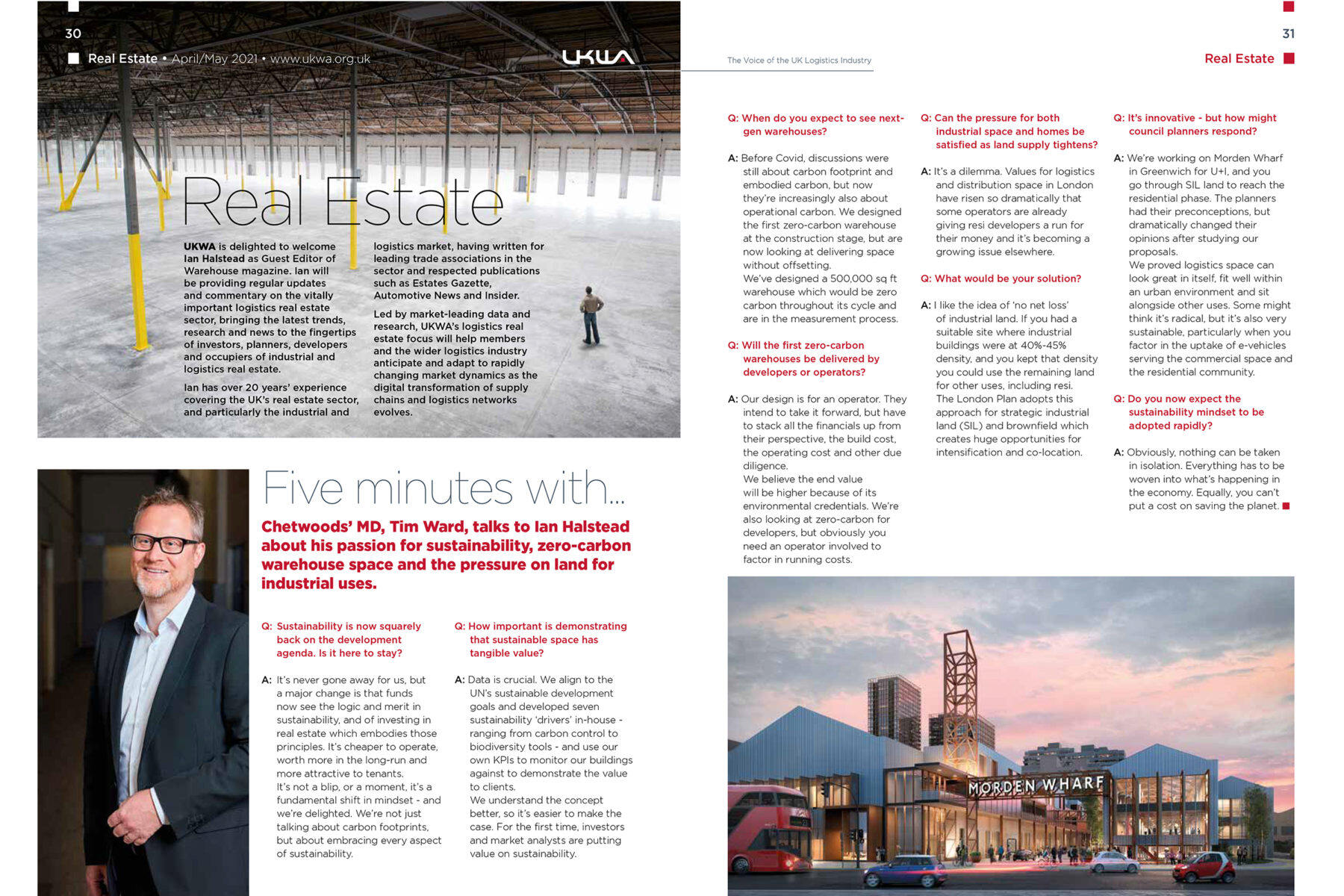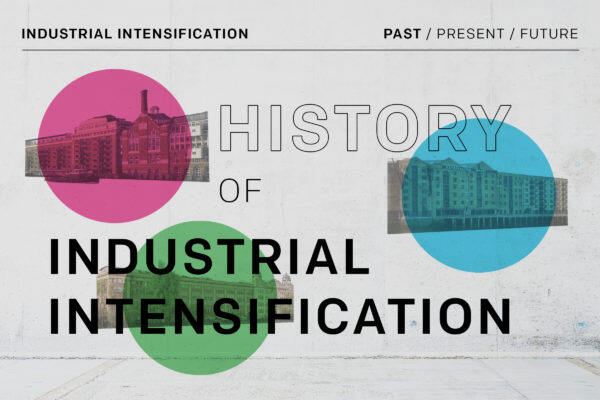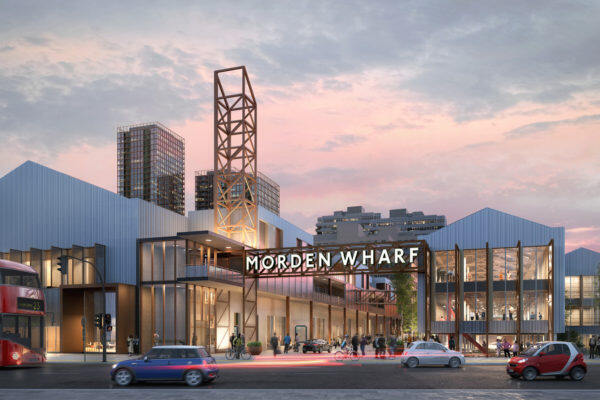The latest edition of UKWA’s Warehouse Magazine features an interview with Chetwoods MD Tim Ward (p30) and an article on our recent Journal post about Industrial Intensification (p38).
Extract from Warehouse Magazine April May 2021:
Chetwoods’ MD, Tim Ward, talks to Ian Halstead, guest editor of Warehouse Magazine, about his passion for sustainability, zero-carbon warehouse space and the pressure on land for industrial uses:
Q: Sustainability is now squarely back on the development agenda. Is it here to stay?
A: It’s never gone away for us as architects, but a major change is that funds now see the logic and merit in sustainability, and of investing in real estate which embodies those principles. It’s immediately cheaper to operate, worth more in the long-run and also more attractive to tenants.
It’s not a blip, or a moment, it’s a fundamental shift in mindset – and we’re delighted. We’re not just talking about the carbon footprint, but about embracing every aspect of sustainability.
Q: How important is demonstrating that sustainable space has tangible value?
A: Data is crucial. We adhere to the United Nations’ benchmarks and have our own measurement tools on every aspect from well-being to biodiversity.
We understand the concept better, so it’s easier to make the case. For the first time, investors and market analysts are also putting value on sustainability.
Q: When do you expect to see next-gen warehouses?
A: Before Covid, discussions were still about carbon footprint and removing embodied carbon, but now they’re increasingly also about operational carbon. We designed the first zero-carbon warehouse, but are already moving on at pace and looking at delivering space without offsetting.
We’ve prepared designs for a 500,000 sq ft warehouse which would be zero carbon throughout its cycle and are now in the measurement process.
Q: Will the first fully zero-carbon warehouses be delivered by developers or operators?
A: Our design is for an operator. Their intent is to take it forward, but they have to stack all the financials up from their perspective, the build cost, the operating cost and all the other elements of their due diligence.
We believe the end value of the building will be higher because of its environmental credentials. We’re also looking at zero-carbon for developers, but obviously you need an operator involved because of the need to factor in running costs.
Q: Can the pressure for both industrial space and homes be satisfied as land supply tightens?
A: It’s a dilemma. Values for logistics and distribution space in London have risen so dramatically that some operators are already giving resi developers a run for their money and it’s becoming a growing issue elsewhere.
Q: What would be your solution?
A: I like the idea of no net loss of industrial land. If you had a suitable site where industrial buildings were (let’s say) at 40%-45% density, if you kept that density you could use the remaining land for other uses, including resi.
Q: It’s innovative – but how might council planners respond?
A: We’re working on Morden Wharf in Greenwich for U+I, and you go through commercial land to reach the residential phase. The planners had their preconceptions, but dramatically changed their opinions when they studied our proposals.
We proved to them that logistics space can look great in itself, fit well within an urban environment and sit alongside other uses. Some might think it’s radical, but it’s also a very sustainable model, particularly when you factor in the uptake of e-vehicles serving the commercial space and the residential community.
Q: Do you now expect the sustainability mindset to be adopted rapidly?
A: Obviously, nothing (however worthy) can be taken in isolation. Everything has to be woven into what’s happening in the financial world and the economy. Equally, you can’t put a cost on saving the planet.
[ Ian Halstead, guest editor of UKWA Warehouse Magazine April May 2021]




